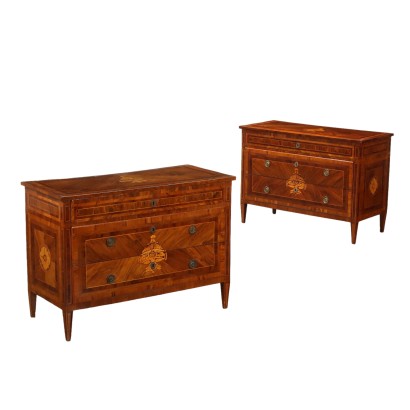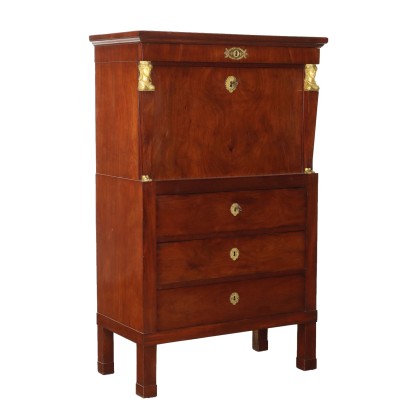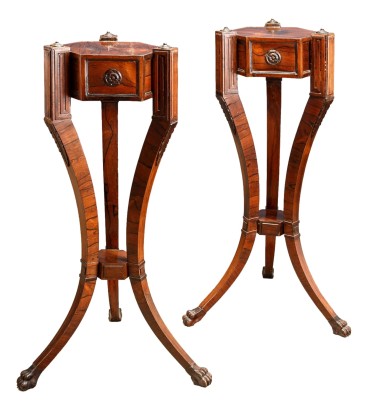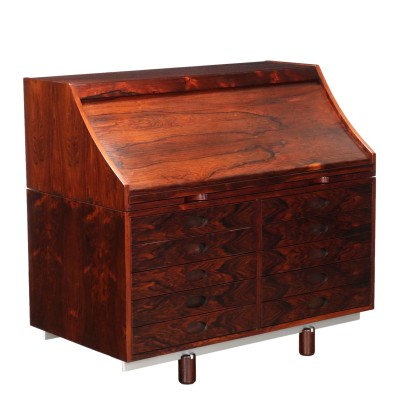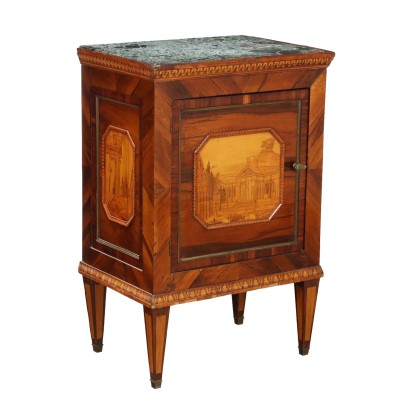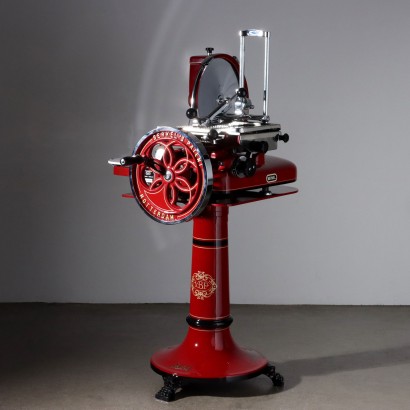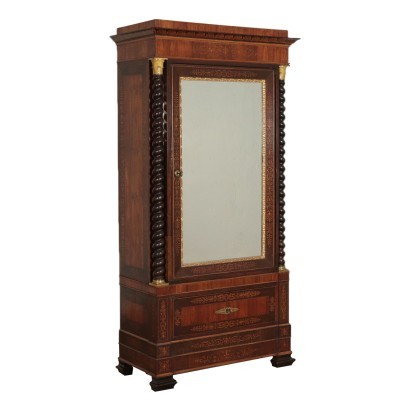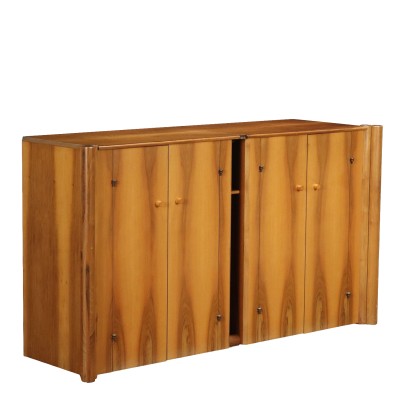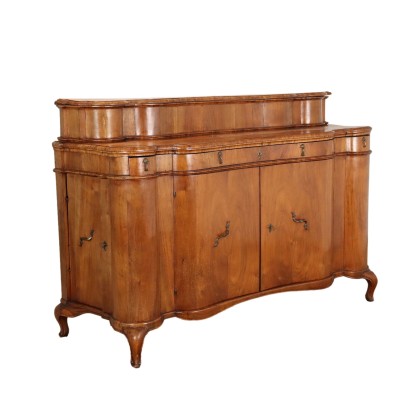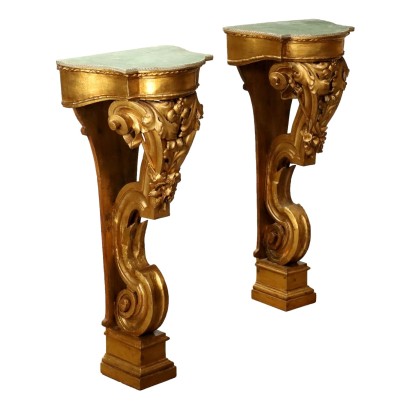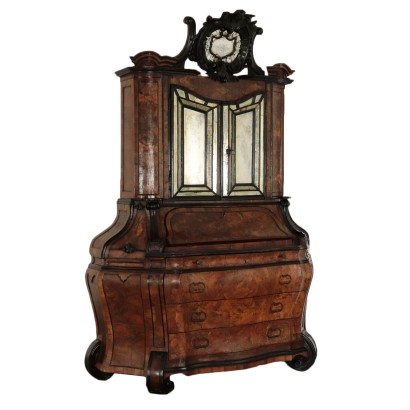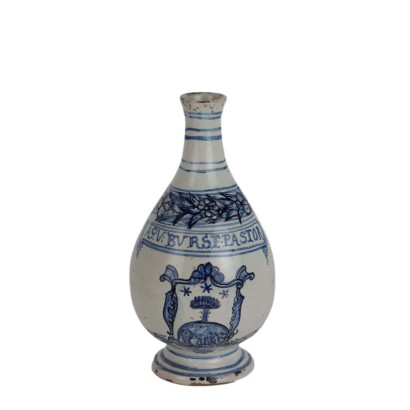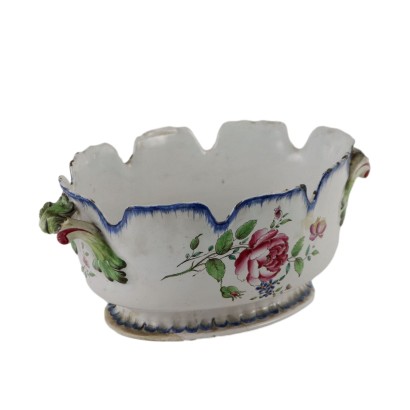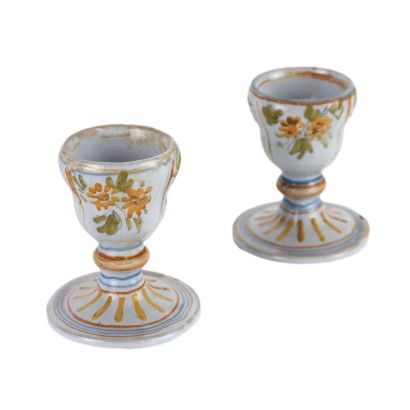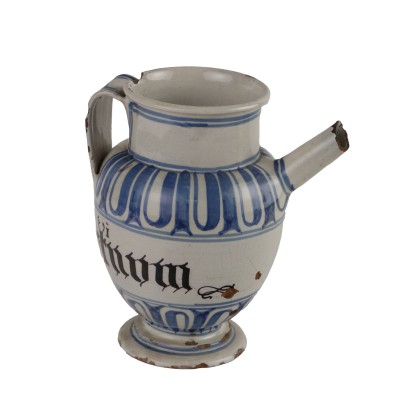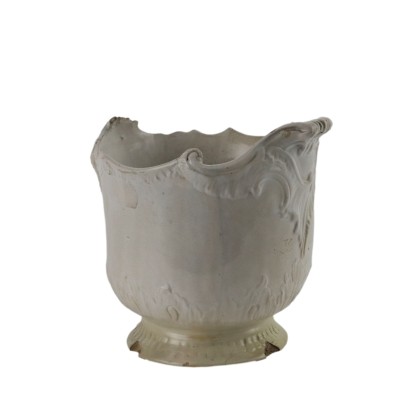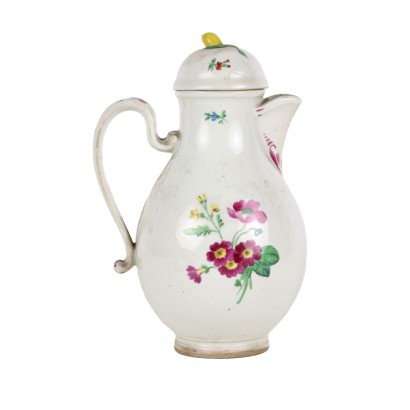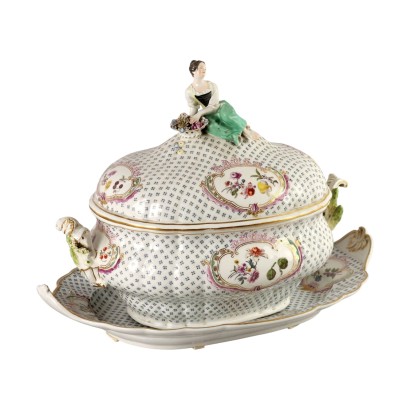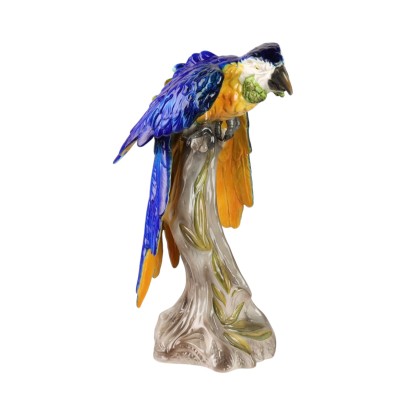Antique Neoclassical Chest of Drawers Various Essences '700 - Italy, Late XVIII Century
Features
Italy, Late XVIII Century
Age: 18th Century / 1701 - 1800
Origin: Emilia Romagna, Italy
Main essence: Silver Fir , Maple , Cypress , Walnut , Blackthorn , Olive
Description
Pair of neoclassical chests of drawers veneered and inlaid according to the taste of the period, made in Emilia at the end of the 18th century. Composed of three drawers resting on the front, one smaller under the top and two larger ones, built with a hidden chain in order to offer a continuous surface convenient for the inlay. Structure in fir veneered in various woods among which the striped walnut pedulle dominates in the wide fields, surrounded by a series of borders in olive, cypress and plum surrounded by maple fillets. On the front and on the tops are inserted classic vases with ring handles and large ribbed lid, made of boxwood and maple. The pairs of chests of drawers are rare and suitable for furnishing a modern room to which they add warmth and flavor of the time.
Product Condition:
Product that due to age and wear may require restoration and polishing. We try to present the real condition of the furniture as completely as possible with the photos. If some details are not clear from the photos, what is reported in the description is valid.
Dimensions (cm):
Height: 85
Width: 118
Depth: 54
Additional Information
Age: 18th Century / 1701 - 1800
18th Century / 1701 - 1800Main essence:
Silver Fir
Soft coniferous wood, used for rustic furniture or to build the chest, that is the structure, of furniture then veneered in more precious woods. It has been used since ancient times, its most valuable use is, in the Spruce variant, in the inlays of French antique furniture of the '700 . The spruce, more typical of northern Europe, in Italy grows mainly in the Eastern Alps at altitudes above 1300 m. The noblest use of this essence was in the construction of violins, guitars and cellos: Stradivari himself produced his famous violins with this wood.Maple
Hard, light wood used for inlays. It grows mainly in Austria, but it is widespread throughout the northern hemisphere, from Japan to North America, passing through China and Europe. It is one of the lightest woods ever, tending to white, it is similar to lime or birch wood. The briar is used in the production of ancient secretaires .Cypress
It is a hard wood, originating from one of the most long-lived plants, it exists in different species. The French variant is light red with darker veins, the cabinetmakers used it more in the inlays. The Asian variant, with shades more greenish, was used in England for the supporting structures of the furniture. In both the United States and Europe it was used for the production of rustic and popular furniture.Walnut
Walnut wood comes from the plant whose botanical name is juglans regia , probably originally from the East but very common in Europe. Light or dark brown in color, it is a hard wood with a beautiful grain, widely used in antique furniture. It was the main essence in Italy throughout the Renaissance and later had a good diffusion in Europe, especially in England, until the advent of mahogany. It was used for solid wood furniture and sometimes carvings and inlays, its only big limitation is that it suffers a lot from woodworm. In France it was widely used more than anything else in the provinces. In the second half of the eighteenth century its use decreased significantly because mahogany and other exotic woods were preferred.Blackthorn
Olive
Extracted from the plant called olea europaea which lives throughout the Mediterranean lands, it is a hard and compact wood. It has a characteristic light color, greenish yellow, with particular dark veins. It is widely used in cabinet making both as a solid wood for entire pieces of furniture and for inlays, veneers and decorations. Being very hard, it is also suitable for turning and for the manufacture of small objects. -Other customers have searched:
Approfondimenti
Scopri di più su cassettiere e comò grazie ai nostri approfondimenti:La storia nascosta in due antichi cassettoni
Conoscere il Neoclassicismo attraverso un cassettone piacentino
Un comò piemontese influenzato dal fascino per l'Oriente
Un signorile comò rococò napoletano
Una caratteristica cassettiera con alzata emiliana di perfetto gusto barocchetto
E per gli appassionati dal gusto più raffinato, c'è FineArt:
Commode a tre cassetti G.B.M., inizio XIX secolo
Canterano dipinto
Canterano emiliano, primo quarto XVIII
Cassettone a ribalta romano, secondo quarto XVIII secolo
Comò attribuito a Luigi Viglione, Luigi XVI, fine XVIII, Torino
Coppia di comò e comodino di Maggiolini
Sull'antiquariato in generale dai un'occhiata anche a
Classic Monday: da un pezzo dei nostri magazzini alla storia dell'antiquariato
L'antiquariato dalla A alla Z: il Dizionario dell'Antiquariato
Il dizionario dell'antiquariato - Lastronatura
Il dizionario dell'antiquariato - Mascherone
Il dizionario dell'antiquariato - Natura morta
Il dizionario dell'antiquariato - Opificio
Il dizionario dell'antiquariato - Pastiglia
Il dizionario dell'antiquariato - Savonarola
Il dizionario dell'antiquariato - Rosone
Product availability
Immediate availability
Ready for delivery within 2 working days from ordering the product.

